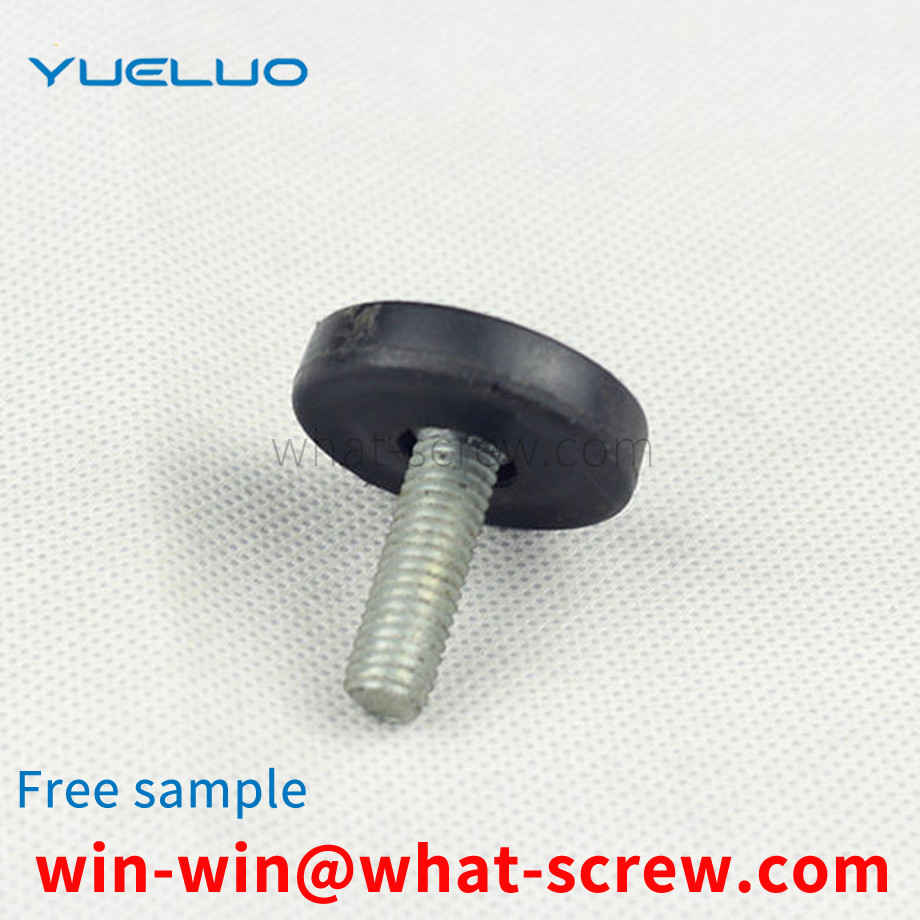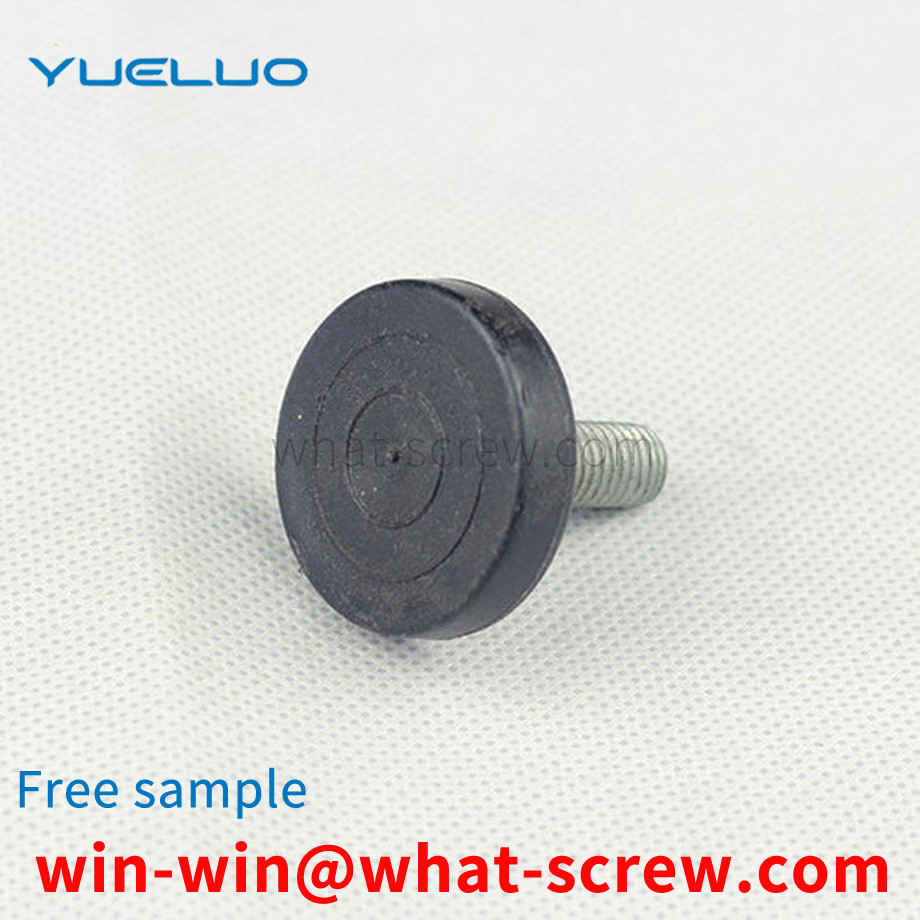The self-tapping locking screw is a series of coarse thread and ordinary thread, and the thread size is M3~M12mm. The threaded rod of the self-tapping locking screw is a thread with an arc-shaped triangular section. The screw is surface hardened and can be screwed into a prefabricated hole of black or non-ferrous metal material (which can be made by drilling, punching or die casting), and extruded to form an internal thread. The threaded rod portion can be made into a cylindrical or triangular shape with a diameter equal to or less than the circumscribed circle. Self-tapping locking screws have low screw-in torque and high locking performance. The varieties of self-tapping locking screws in the product standard of Chinese commodity fasteners include GB/T6560 (cross-recessed pan head), GB/T6561 (cross-recessed countersunk head), GB/T6562 (cross-recessed half-sunk head), GB/T6563 ( Hexagon head), GB/T6564 (hexagonal flower-shaped cylindrical head) five series. Self-tapping locking screws are generally fastened with pneumatic or electric screwdrivers. Most of the automotive industry uses hexagonal head, cross recessed pan head and hexagonal socket head self-tapping locking screw with high fastening efficiency.
The existing Galwaymachine screw structure is not conducive to assembly and automated production. The Galwaymachine screw is in the form of a cylinder, the outer surface of the cylinder is provided with threads, and one end of the Galwaymachine screw is provided with a notch. During installation, it is convenient to rotate the Galwaymachine screw by the tool acting on the notch, so that the Galwaymachine screw all enters the threaded hole and does not occupy the external space. However, the thread on the outer surface of the Galwaymachine screw corresponding to the slot is easily deformed or scratched due to the external force of the tool and the threaded hole, which makes it difficult to screw in or disassemble, and reduces the versatility and interchangeability. affect product quality.
Gears, mechanical components with teeth on the rim that can continuously mesh to transmit motion and power, are mechanical parts with teeth that can mesh with each other. The gears used in industry are generally made of steel. The commonly used steels are quenched and tempered steel, hardened steel, carburized and quenched steel and nitrided steel. The strength of cast steel is slightly lower than that of forged steel, and it is often used in Larger-sized gears; gray cast iron has poor mechanical properties and can be used in light-load open gear transmissions; ductile iron can partially replace steel gears; plastic gears are mostly used in places where light loads and low noise are required, and are matched with them The gears are generally made of steel gears with good thermal conductivity.
The bolt thread is generally cold worked, so that the thread blank within a certain diameter range passes through the rubbing (rolling) wire plate (die), and the thread is formed by the pressure of the wire plate (rolling die). The plastic streamline of the threaded part is not cut off, the strength is increased, the precision is high, and the quality is uniform, so it is widely used. In order to make the outer diameter of the thread of the final product, the required thread blank diameter is different, because it is limited by factors such as thread accuracy and whether the material is coated or not. Rolling (rubbing) thread is a processing method that uses plastic deformation to form thread teeth. It uses a rolling (screwing plate) die with the same pitch and tooth shape as the thread to be processed, while extruding the cylindrical screw blank, while rotating the screw blank, and finally transferring the tooth shape on the rolling die to the On the screw blank, the thread is formed. The common point of rolling (rubbing) thread processing is that the number of rolling revolutions does not need to be too much. If it is too much, the efficiency will be low, and the surface of the thread teeth will easily cause separation or random buckle. On the contrary, if the number of revolutions is too small, the diameter of the thread is easy to be out of round, and the pressure at the initial stage of rolling increases abnormally, resulting in a shortening of the life of the die. Common defects of rolled threads: cracks or scratches on the surface of the thread part; random buckles; out of roundness of the thread part. If these defects occur in large numbers, they will be discovered during the processing stage. If the number of occurrences is small, the production process does not notice these defects and then circulates to users, causing trouble. Therefore, the key issues of processing conditions should be summarized, and these key factors should be controlled in the production process.
When the iron pot is manufactured, the iron head is connected to the iron pot body through rivets, and then the pot handle is set through the iron head, and the iron head connects the pot handle and the iron pot body together. However, when the iron head is installed, the position may be inaccurate. At this time, it is necessary to remove the rivet and reinstall the iron head. At present, the removal of rivets is completely done manually, that is, workers use screwdrivers to unscrew the rivets, which is difficult to remove, wastes a lot of manpower, and has low work efficiency, thereby reducing production efficiency.
We have many years of experience in the production and sales of screws, nuts, flat washers, etc. The main products are: external threaded studs, hexagon head 8.8 screws, 8 high-strength GB6170 hexagon nuts, large cap nails, large flat head rivets and other products , we can provide you with a fastener solution that suits you.



















 Service Hotline
Service Hotline




